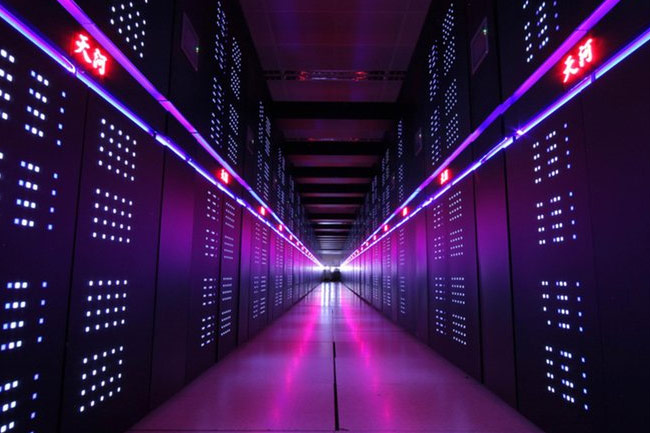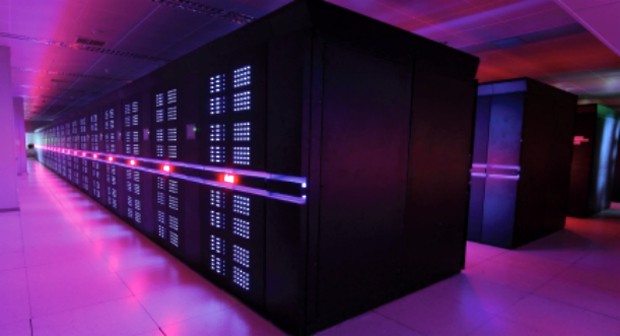

The world’s most powerful computer belongs to China.
Twice a year, the TOP500 project ranks the 500 most powerful computer systems in the entire world. With origins dating back to 1993, the list provides a reliable basis for tracking and detecting trends in high-performance computing. Compiled by some of the best computer science minds on the planet, the TOP500 list is a Who’s Who of the most innovative countries in terms of computing technologies. And for the third consecutive time, China’s Tianhe-2 supercomputer has been ranked number one.
The Tianhe-2, which translates to “Milky Way-2” in English, is so powerful that it required a team of 1,300 scientists and engineers from China’s National University of Defense Technology to build it. Sponsored by the People’s Republic of China’s State High-Tech Development Plan, the computer was built on the premise that China could one day become independent of financial obligations for foreign technologies. The computer is so powerful, that it’s able to perform 33,860 trillion calculations per second. One hour of these calculations by the machine is the equivalent of 1,000 years of difficult sums by 1.3 billion people – ironically, the current population in China.
One look at the specs and you can see why the Tianhe-2 is at the top of the list:
- Cores: 3,120,000
- Linpack Performance (Rmax): 33,862.7 TFlop/s
- Theoretical Peak (Rpeak): 54,902.4 TFlop/s
- Power: 17,808.00 kW
- Memory: 1,024,000 GB
- Interconnect: TH Express-2
- Operating System: Kylin Linux
- Compiler: icc
- Math Library: Intel MKL-11.0.0
- MPI: MPICH2 with a customized GLEX Channel

The Tianhe-2 is nearly twice as fast as the second-fastest computer in the world.
With 16,000 computer nodes, each composed of two Intel Ivy Bridge Xeon processors and three Xeon Phi coprocessor chips, the Tianhe-2 is almost twice as fast as the second computer on the list: the United States’ Cray Titan. And while the United States still has the most computers on the TOP500 list with 233, that number is 32 fewer than it had on the previous list. Meanwhile, China now has 76 computers on the list, 13 more than last time.
China’s growth in computer technology is impressive. While the Tianhe-2 is the only Chinese computer ranked in the top 10, the Asian nation now has nearly as many computers as the UK (30), France (27), and Germany (23) combined. And while there seems to be a slowing trend in performance growth from all nations, China is one of two nations (the other being Japan) who is growing. But, does this mean China can become financially independent from foreign technologies? Not quite.
According to a press release issued by the TOP500, “Intel continues to provide the processors for the largest share (85.4 percent) of TOP500 systems.” Couple this with the fact that HP has the lead in systems with 182 (36 percent) and IBM is in second place with 176 (35 percent), and it becomes apparent that American companies are paving the future of computer technologies. However, because supercomputers have become so powerful, it has actually been a hindrance to the overall growth in computer system performance.
“For the second consecutive list, the overall growth rate of all the systems is at a historical low. This lag in the overall average performance of all 500 systems is noticeably influenced by the very large systems at the top of the list. Recent installations of very large systems – up to June 2013 – have counteracted the reduced growth rate at the bottom of the list, but with few new systems at the top of the past few lists, the overall growth rate is now slowing. This offers an indication that the market for the very largest systems might currently behave differently from the market of mid-sized and smaller supercomputers.”
–The TOP500
Supercomputers play an important role in our lives. Used for a wide range of computationally intensive tasks, they are essential for quantum mechanics, weather forecasting, climate research, oil and gas exploration, molecular modeling, physical simulations, the detonation of nuclear weapons, and other applications. The Tianhe-2, which hasn’t been put to work yet, already has big plans in store.
According to the National University of Defense Technology, the Tianhe-2 will be used for simulation, analysis, and government security applications. But with a price tag over $385 million dollars that occupies 7,750 square feet of space, some people think it’s a bit of overkill for what it will be used for.
“I have visited many computing centers. In some places dust has built up on the computer because the entire facility had been shut down for months without a single user. Even in big cities such as Beijing and Shanghai, only a small fraction of the total capacity was used. The supercomputer bubble is worse than a real estate bubble. A building will stand for decades after it is built, but a computer, no matter how fast it is today, will become garbage in five years.”
–A Senior Scientist at the Beijing Computing Center

